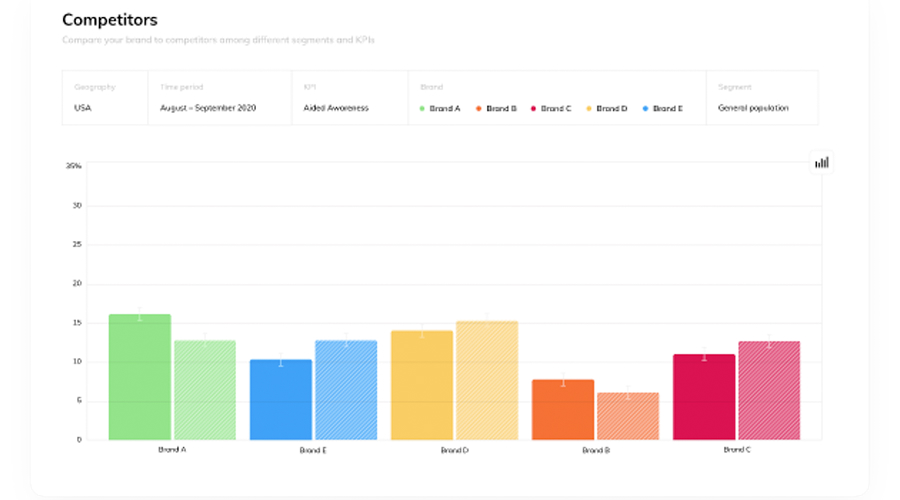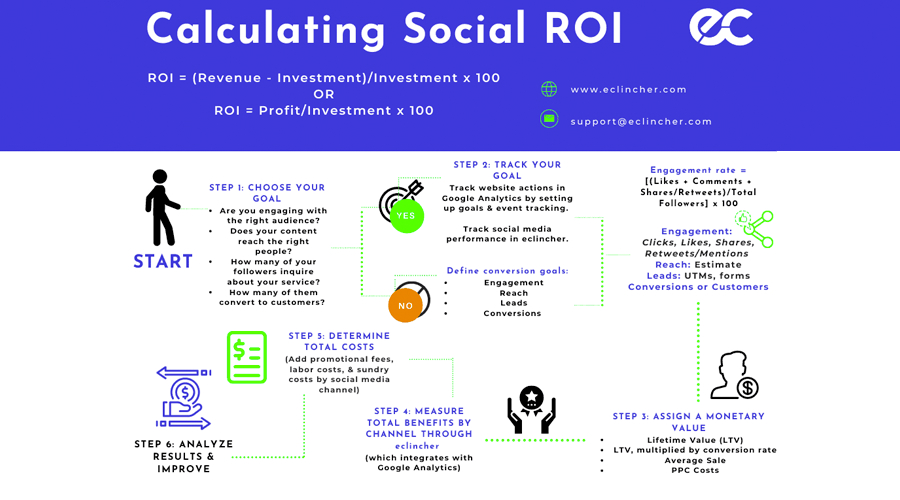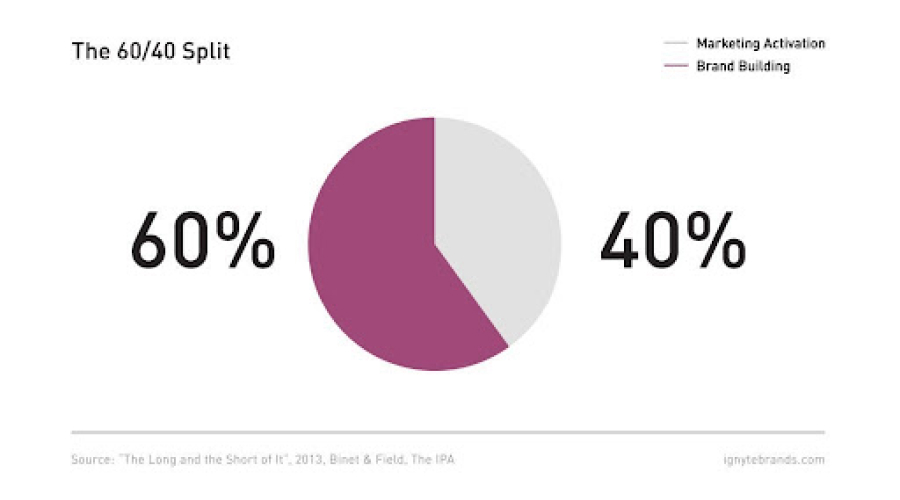
What comes to mind when you hear the term “brand tracking” — a crucial component of your marketing plan? A pointless and costly effort? A terrible headache?
Many brand managers have trouble with effectively monitoring their brand activity since they have in the past relied solely on intuition or poor tools to gauge how well a campaign is doing.
What is brand tracking, the purpose of brand tracking, why you should do brand tracking, and many more questions? If you have such questions, then you are in the right place.
After reading this article, we are sure that you will better understand brand tracking as a concept and why you should do it, regardless of where you presently stand on its necessity or practicality.
Let’s get started right away.
What is Brand Tracking?
Brand tracking is the continuous assessment of your efforts to create your brand against important metrics like brand awareness and perception.
To improve sales, provide a higher return on marketing expenditure, and gain market share, big brands can use brand tracking tools like Ahrefs to evaluate the health of their brands and make wise decisions.
What is the purpose of Brand Tracking?
According to Harvard Business School, brands account for 40% of the value of giant international corporations, and 95% of shopping decisions are driven more by emotion than reason.
Customers today demand more from the brands they connect with than just high-quality goods. Consumers want to connect with brand values and their overall market perception.
A 2020 survey revealed that 60% of customers were buying more environment-friendly products due to the epidemic.
Therefore, brand tracking is made simple by tracking fundamental KPIs, including brand awareness, perception, affiliations, usage, and more.
This information enables brand managers to comprehend target audiences’ overall perceptions, preferences, and usage patterns of their products.
“THE ONLY WAY TO REACH SKY HIGH IS BY CONSISTENTLY DOING BRAND TRACKING.”
Making sense of positives and negatives to develop a brand strategy involves learning brand monitoring practices and strategies with branding, marketing training, paying attention to the indicators, monitoring them over time, and assessing brand health properly.
Three reasons why we should do Brand Tracking
There are more than three reasons to track your brand, but I find these three reasons the most important.
1. Detect and address underperformance immediately
First and foremost, we should track brands because we can quickly identify and address underperforming areas where your brand is.
By regularly collecting brand health indicators, you can compare over time to determine how customers perceive your brand at different stages or in response to advertising, media, and events.
You can spot declining brand awareness, perceived brand quality, and client loyalty with various historical data. Then you may create plans to help increase brand recognition and keep your business at the forefront of the minds of new and existing clients.
One of the reasons to track brand performance is also to handle the situation when a dissatisfied customer publishes a bad review online for all other potential customers to see. Therefore, brand monitoring becomes essential in this situation.
In addition to reducing the negative effects of unfavorable customer feedback, diligent management of your online reputation also contributes to developing a positive one.
Simply put, brand monitoring (also known as web listening) is the process of keeping track of various media outlets, including articles, journals, videos, forums, ratings, and more, to find out where your product has been mentioned.
Brand monitoring covers the entire web, as opposed to social media monitoring, in which you only pay attention to your social media coverage.
You can rely on various web monitoring tools which are available in the market, where you may follow mentions and reviews, find out what others are saying about your company, find trends, and access user-generated material, among other things, with these tools.
So if your performance is declining, then with the help of the tool, you can detect your performance immediately.
Moreover, here’s an interesting approach you can take to improve your overall content marketing game.
Whenever some other blogs or companies mention your brand name, you can reach out to them for partnerships or content marketing collaborations. This way, you’re leveraging the existing opportunity and creating fresh ones.
2. Comparing your brand to rivals

Are you aware of how your brand compares to its competitors in the market?
Do you know if your brand is the best option for your target market?
Even better, how can you learn? Companies can better understand where they are compared to competitors by identifying rivals and comparing crucial variables like mentions, cost of services, or customer loyalty.
With effective media monitoring, you can find the answer to why customers choose one brand over another.
Essentially, you need to track a bunch of KPIs to find the answer to the above question:
- Your position vs. your competition’s position in the market
- Your public perception vs. your competition’s
- Latest industry trends affecting buyer decision making
- What percentage of the audience you and your competitors are sharing
All these KPIs blended with media monitoring are magical.
Specifically, certain tools help you identify these insights:
- Identify new competitors in the market before your existing competitors.
- Explore more content ideas and come up with insightful topics for your blogs/resources and manage your social media profiles
- Stay updated with minor competitor movements in the market and schedule the post with the help of CRM automation.
- Grab influencer marketing opportunities before your competitors
Also See: How Visual Identity Impacts Branding And User Experience
3. Observed return on investment
It can be challenging for many marketers to show the return on their marketing investments. With several inputs at your disposal, it’s simple to feel upset. However, determining impact and matching spending with profits is quite challenging.
With brand tracking and monitoring tools, you can monitor crucial brand metrics and evaluate the success of your specific campaigns and the company’s overall presence.
You can gain critical insight into how to significantly improve your social marketing when you accurately measure the ROI of your social media efforts. It makes it easier to comprehend how to draw in followers, turn them into consumers, and interact with your audience.
There are various tools, which guarantees to boost your social media ROI and grow your reach.

Additionally, regular brand tracking enables you to gather pertinent data that you can utilize to guide your brand strategy from now on.

According to the research, the company’s budget should be split roughly 60 % into brand creation and 40 % into marketing activity for maximum efficacy.
Below 60% of the budget must be allocated to branding to build the necessary brand equity for upcoming sales growth.
You can distinguish your brand from the competition by setting goals, reviewing essential data, and taking action quickly where there are opportunities.
I’d like to mention the importance of the right media tracking tool again because it gives you a real picture of your positioning in the market. You can not allot 60% of your marketing budget to brand-building activities without knowing your position.
Many media monitoring software enables you to get a birds-eye view of your brand, so you can create a proper and realistic marketing budget allocation.
How Brands Do Brand Tracking?
So after reading the article, we have a rough idea of what brand tracking is and why you should do brand tracking, but now the question must come to everyone’s mind: how do brands do tracking?
So there are procedures for measuring the accomplishment of your brand-building project that are much the same as those for any other study. The steps are simple:
- Decide on your objective
- Gather data
- Define metrics
- Make improvements
- Analyze and repeat.
Let’s understand each of these steps with an example:
1. Decide on your objective.
My goal for this example is to grow brand awareness and conversions from social media channels.
2. Gather data
Now, I’ll try to find the historical data, like the percentage of customers from social media channels from your database. You can easily find such data from Google Analytics or your company’s customer relationship management software.
3. Define metrics
I’ll define a couple of metrics to help me identify my campaign’s progress. So for our example, Total traffic and conversions from social channels are the most relevant metrics.
4. Make improvements
This is the most crucial part of the campaign, where you need to identify what didn’t work in your previous campaigns and fix the issues. Then, you must develop a better campaign plan and execute the improved version on preferred channels.
Examine how you can rework your previous creativity. For example, if it was a simple post, try to turn it into a descriptive video & give it some edits using online video editing software.
A video will help explain your company more or investigate how your competitor’s campaigns are keeping them going.
5. Analyze and repeat
After the successful campaign execution, it’s time to check the results. Again, you must rely on Google Analytics or CRM tools to find the updated data.
You can simply compare the timeline of the previous period and the current period (with the improved campaign). You would be able to see clearly if the improved campaign works or not.
If it works, you need to adopt this system and repeat it!
Final thoughts
While brand tracking may appear complicated, we think you’ll agree that it’s vital for businesses to set up and have a deeper understanding of how everything fits into the overall business strategy.
The only way to properly grasp your brand’s performance in the industry and among consumers is to track it regularly for business process improvement.
Authors bio
Riyanshi is an enthusiastic content creator and SEO strategist at Salesmate who curates information on marketing, sales, and customer experience. She loves to explore new places and meet new people when she is not working.






